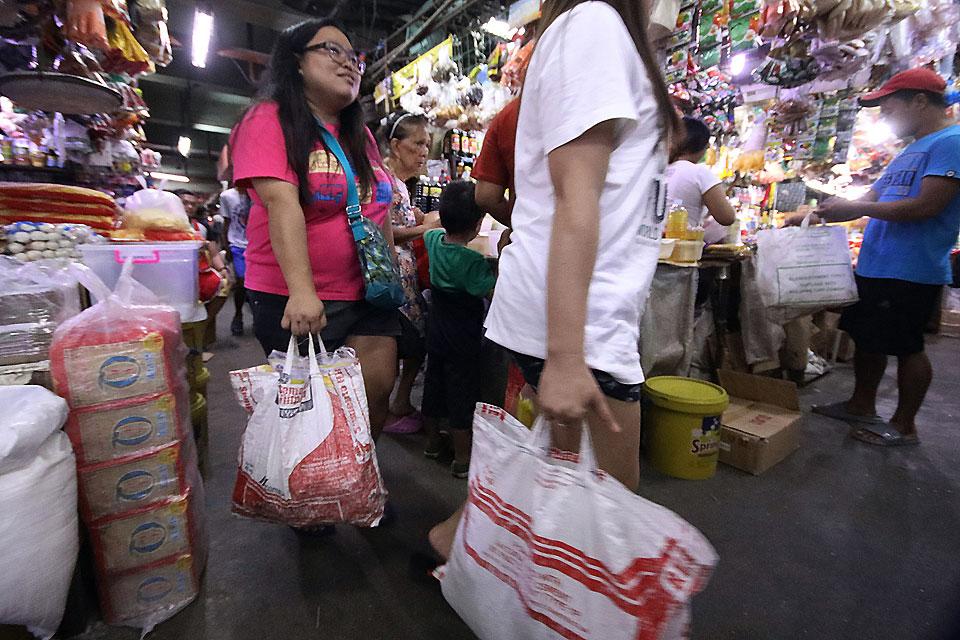Inflation slowed down to 4.1% in June, says PSA

Inflation or the rate of increase in the prices of goods and services slowed down in June after three straight months of recording a flat reading, the Philippine Statistics Authority (PSA) reported on Tuesday.
At a virtual press conference, PSA chief and National Statistician Claire Dennis Mapa reported that inflation clocked in at 4.1% last month, slower than the 4.5% rate recorded in May, April, and March.
The latest reading brings the country’s average inflation for the first half of 2021 at 4.4%, still exceeding the government’s target band of 2% to 4%.
Nonetheless, it is within the Bangko Sentral ng Pilipinas’ (BSP) forecast range for the month of 3.9% to 4.7%.
In a statement, BSP Governor Benjamin Diokno said the latest inflation print is consistent with expectations that inflation could remain above target in the near term as eat and oil prices remain elevated.
“Ang dahilan ng pagbaba ng antas ng inflation nitong Hunyo 2021 ay ang mas mabagal na paggalaw ng presyo ng Transport na may 9.6% at 95.4% share sa pagbaba ng presyo,” Mapa said.
(The reason for the decline of inflation in June 2021 is the slower pace of movement of Transport index at 9.6% and with a share of 95.4% in the slowdown of prices.)
Mapa said the slowdown in Transport index was due to the declines in tricycle fare at 17.6% from 38.8% in May, jeepney fare at 4.3% from 6.3%, and petroleum and fuels at 21.5% from 33%.
Inflation also slowed down in the indices of the following commodity groups:
- Alcoholic beverages and tobacco, 11.2% from 11.8%
- Clothing and footwear, 1.6% from 1.7%
- Health, 2.9% from 3.2%
- Communication, 0.2% from 0.3%
Meanwhile, inflation rates were higher in the indices of food and non-alcoholic beverages at 4.7% from 4.6%; housing, water, electricity, gas, and other fuels at 2.4% from 2%; and restaurant and miscellaneous goods and services at 3.9% from 3.8%.
The rest of the commodity groups -- namely furnishing, household equipment and routine maintenance of the house; education; and recreation and culture --retained their respective annual growth rates.
Mixed movements were recorded in the annual growth rates in the indices of food groups in June, according to the PSA chief.
Higher annual increases were observed in the following food groups:
- Corn, 5.3%
- Fish, 8.7%
- Oils and fats, 4.2%
- Sugar, jam, honey, chocolate and confectionery, 1.0%
- Food products, not elsewhere classified, 1.4%
Annual hikes, meanwhile, slowed down in the indices of meat at 19.2%; and milk, cheese and egg at 1%.
The PSA chief other food groups exhibited annual decreases, except other cereals, flour, cereal preparations, bread, pasta, and other bakery products which retained its previous month’s annual rate of 1.8%.
Inflation in NCR
Inflation experienced in the National Capital Region (NCR) followed the national trend as it eased to 3.2% from 3.6% in May.
Similar to the national level, the inflation in NCR was mainly brought by the slower increase in the transport index at 5.1% from 13.8% in the prior month.
Areas outside NCR
Also following the national trend, inflation in areas outside NCR decelerated to 4.4% from 4.7% in May also due to slower annual uptick in the transport index at 11.2% from 17.4% in May.
Eleven regions in areas outside NCR had lower inflation during the month, according to the PSA.
The lowest inflation among the regions in areas outside NCR in June remained in Region VII or Central Visayas at 1.7%, while the highest was still in Region V or Bicol Region at 6.3%.
Inflation for bottom 30%
Inflation felt by the bottom 30% income households, likewise, slowed down to 4.3% in June from 4.5% in the prior month.
The downtrend in the inflation for June was mainly brought about by the slower annual increase in the transport index at 14.7%, from 22.1% in May.
Slower annual increments were also observed in the indices of alcoholic beverages and tobacco at 11.5%; communication, 0.4%; and restaurant and miscellaneous goods and services, 4.2%.
BSP’s Diokno said, “The effective implementation of direct non-monetary measures will be crucial in mitigating further supply-side pressures.”
“The risks to the inflation outlook remain broadly balanced. The uptick in international commodity prices owing to supply chain bottlenecks and the recovery in global demand could lend upward pressures on inflation,” he added.
“However, downside risks to the inflation outlook continue to emanate from the emergence of new coronavirus variants which could delay the easing of lockdown measures and temper prospects for domestic growth.”
Diokno said the BSP remains watchful over the evolving economic conditions and challenges brought about by the pandemic to ensure that the monetary policy stance remains consistent with its price and financial stability objectives.—KBK, GMA News




